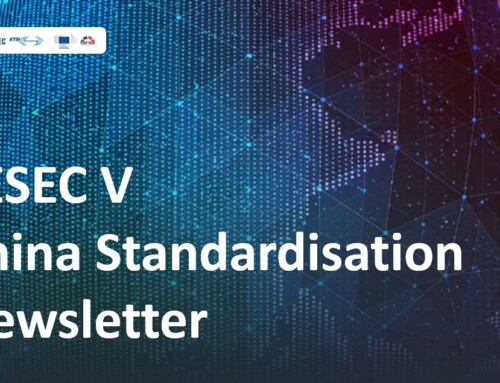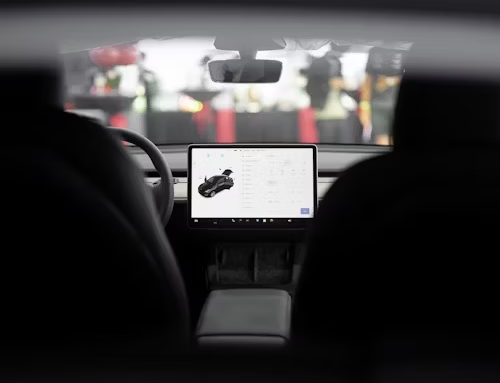On 16 January 2025, the State Administration for Market Regulation (SAMR) and the Standardization Administration of China (SAC) released the “Belt and Road” 10-Year Standardization Achievements Report. This document offers a comprehensive overview of the progress and milestones in standardization cooperation achieved under the Belt and Road Initiative (BRI) over the past decade.
There are about 5 Chapters, 19 pages and totally 12,600 Chinese Characteristics (About 7,700 English words) in this report.
Key Highlights of the Report
The report presents major initiatives and accomplishments in five key areas, providing insights into China’s standardization strategy within the BRI framework:
1. Global Cooperation on Standards
China has signed 138 intergovernmental cooperation agreements with countries participating in the Belt and Road Initiative (BRI) across regions including Asia, Africa, Europe, and Pacific Island nations. These agreements cover areas such as diplomacy, science and technology, commerce, and market regulation, with 42 of them incorporating standardization cooperation. SAC has signed 108 standardization cooperation documents with 65 national standardization bodies, regional standardization organizations, and international organizations.
Additionally, China has actively hosted international forums and conferences to build consensus and foster collaboration in areas such as green development, intelligent manufacturing, and infrastructure standards. Prominent events include the Qingdao International Standardization Conference and the China-ASEAN Standardization Cooperation Forum.
2. Infrastructure Development
Chinese standards have supported the construction of significant infrastructure projects, including various railway, road, port, and energy initiatives. For example,
- In the field of road transportation, China, together with countries participating in the Belt and Road Initiative, has developed 31 International Union of Railways (UIC) standards, including the High-Speed Railway Implementation standard, of which 18 have been published. These standards support the construction of eight railway cooperation projects, including those in Pakistan, China-Kyrgyzstan-Uzbekistan, China-Laos, the Mombasa-Nairobi railway, and the Jakarta-Bandung high-speed railway in Indonesia.
- In energy infrastructure, China’s Ministry of Water Resources and the Standardization Administration, in collaboration with the United Nations Industrial Development Organization (UNIDO), jointly signed a Memorandum of Understanding on Cooperation to Promote International Standards for Small Hydropower. This collaboration aims to develop ISO international standards for small hydropower.
- In the fields of solar energy, nuclear power, ultra-high voltage (UHV), and smart grids, China has engaged in various forms of international standardization cooperation, cumulatively developing 88 international standards related to UHV and smart grids.
3. Trade and Information Platforms
Under the Regional Comprehensive Economic Partnership (RCEP) and the China-ASEAN Free Trade Area Agreement, dedicated chapters on standards, technical regulations, and conformity assessment have been established to strengthen the implementation of the Agreement on Technical Barriers to Trade (TBT Agreement) and facilitate goods trade among the contracting parties. Within the framework of free trade agreements between China and regions or countries such as the Gulf Cooperation Council (GCC), Israel, and Cambodia, efforts have been made to promote standards harmonization, facilitate the exchange of standards-related information, and advance standardization cooperation with relevant countries.
Furthermore, the launch of the Belt and Road Standards Information Platform and the Standards Translation Cloud Platform has facilitated the dissemination and integration of Chinese technical standards within BRI countries. These platforms, which provide access to over 1.3 million standards from 149 countries, aim to reduce technical barriers to trade and improve accessibility for stakeholders.
4. Finance
Chinese standards in the financial sector, such as the Basic Requirements for Banking Service Outlets and the Service Evaluation Criteria for Banking Outlets, have been published in English, Burmese, Lao, and other languages. Additionally, Chinese financial standards are being translated into Portuguese, Vietnamese, Khmer, and other languages, providing technical references to enhance the quality and standards of financial services for commercial banks in Belt and Road Initiative (BRI) countries.
The People’s Bank of China supports the Asian Financial Cooperation Association in developing standards such as the Guide to Banking Service Outlets and the Guide to Personal Financial Information Protection. These standards draw on China’s banking service outlet operations and personal financial information protection practices, tailored to the economic development realities and practical experiences of BRI countries and regions, thereby contributing to regional financial standardization cooperation.
5. People-to-People Cooperation
The report highlights China’s efforts to strengthen ties with BRI partners through healthcare, education, and cultural exchanges. Initiatives include developing international standards alliance for proton, superconductivity, and nuclear energy applications, organizing services trade standardization forum to promote exchange and cooperation in standardization development in areas such as digital exhibitions, e-commerce, human resources, live-streaming economy, and cultural creativity.
Implications for European Stakeholders
The report provides valuable insights into China’s outreach and influence in standardization within BRI countries. It can serve as a reference for policymakers, including those in the EU, to better understand the Chinese standardization system and its implications for international cooperation.
The numbers and the information above are just some highlights in the report. A full translation of the report will soon be available on our website. Stay tuned for updates.




